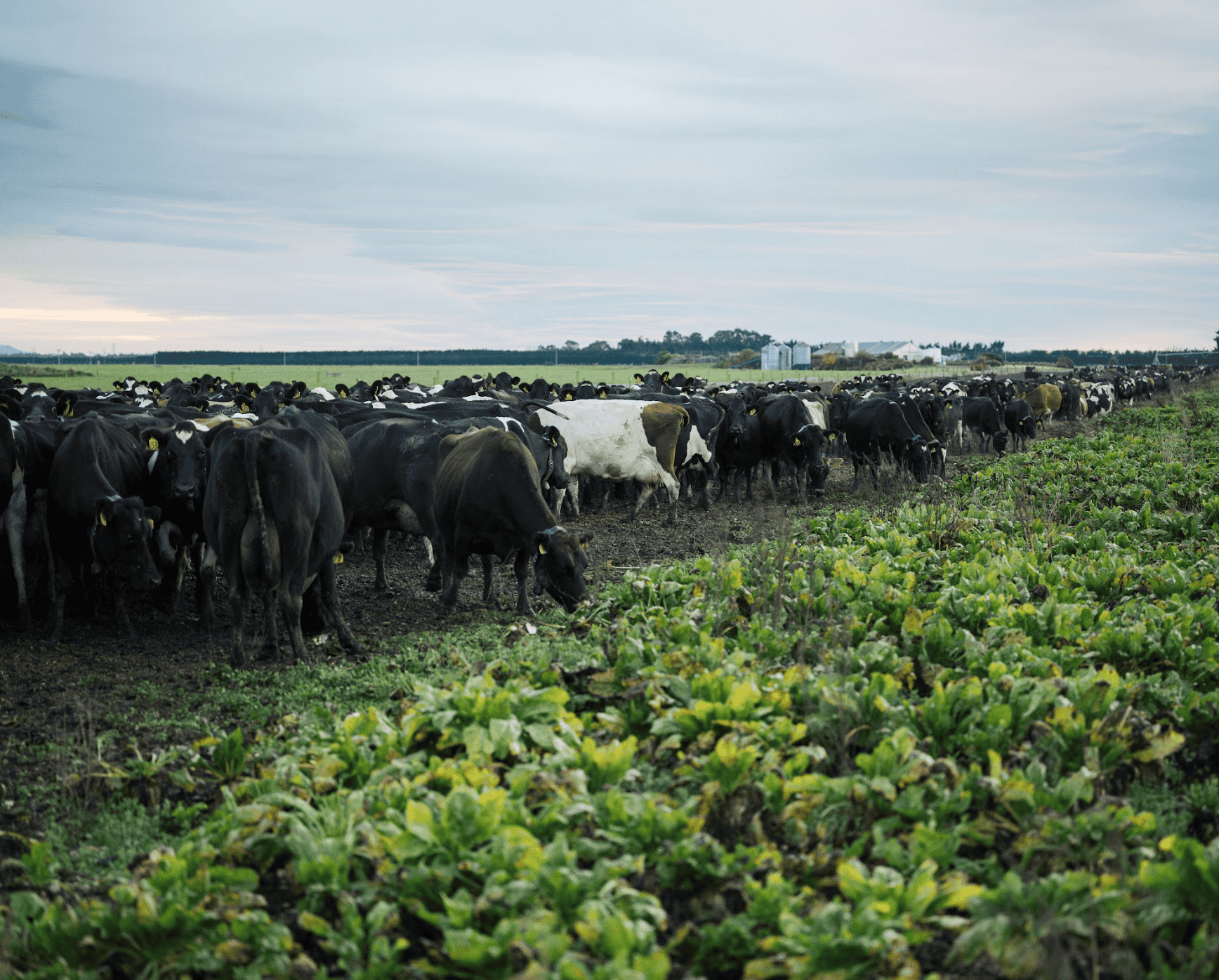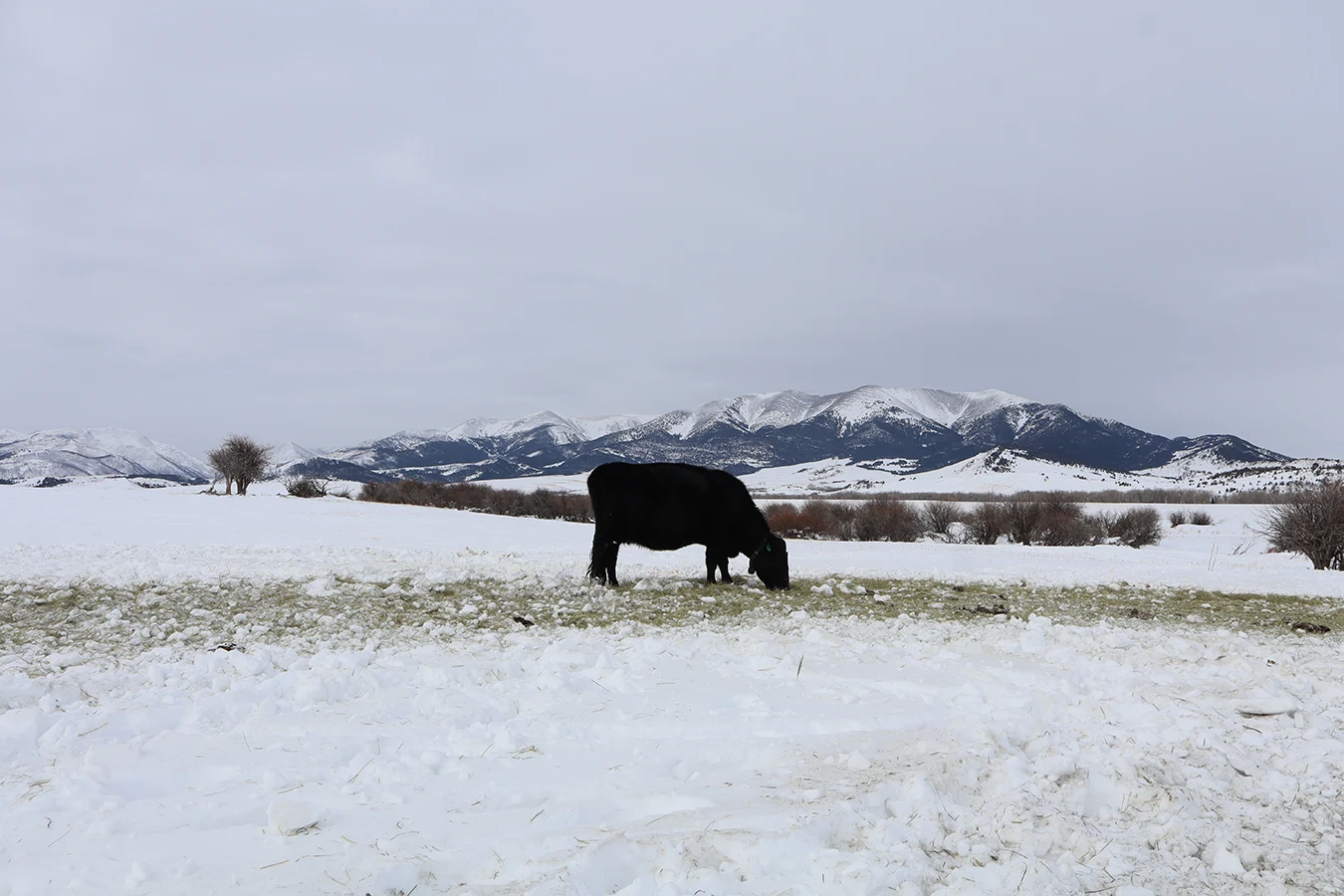Using Halter on Crops: How Virtual Fencing is Transforming Crop Grazing Efficiency
Using Halter on Crops: Boost Utilisation & Reduce Labour
For many dairy farmers across New Zealand, crops are a lifeline during challenging seasons. Whether it’s winter feed when pasture growth slows or summer crops to fill the feed gap during dry spells, crops play a crucial role in maintaining productivity.
But managing crop grazing is complex - it’s labour-intensive, weather-dependent, and if poorly managed can be costly; poor utilisation and damaged soils. That’s where Halter’s virtual fencing technology is changing the game. Farmers using Halter on crops are seeing improved feed utilisation, reduced labour, and better soil and animal outcomes - all while making smarter regrassing and cropping decisions.
Why Farmers Grow Crops
Most dairy farmers grow crops to fill feed deficits when pasture growth can’t keep up. In winter, crops provide essential feed when grass stops growing, and summer crops fill the gap when drought hits.
Another reason is to rest and renew pastures. Many farmers aim to re-grass around 10% of their farm each year, and cropping in between helps to maintain soil health, manage weed burdens, and set the paddock up for a successful pasture rotation.
Cropping often happens on lower-performing paddocks - those identified using tools like Halter’s Paddock Performance feature, which highlights underperforming pastures ready for renewal. Farmers might also crop “sacrifice paddocks,” knowing they’ll re-grass them later or recontour them for improved drainage and shape.

Managing Crops with Halter: Same Principles, Smaller Breaks
The fundamentals of virtual fencing stay the same whether you’re grazing pasture or crop, but the scale changes. Crop breaks are generally smaller because of the high yield per hectare.
While a pasture break might provide 1,500 kg DM/ha, kale crops can exceed 17 tDM/ha, and fodder beet can reach over 25 tDM/ha. Halter allows farmers to draw precise breaks that account for these differences, ensuring cows get exactly what they need while minimising waste.
Integrating Crops with Halter: From Summer to Winter Systems
Crops can be part of both summer and winter systems, and Halter helps make both easier to manage:
- Summer crops are often grazed in combination with pasture, meaning additional workload shifting mobs between paddocks. With Halter, farmers can easily manage on/off grazing between crop and pasture, optimising feed use with minimal additional labour.
- Winter crops (like kale, swedes, and fodder beet) are often grazed full-time on run-off blocks. Halter enables farmers to draw consistent daily breaks remotely, even in tough conditions - no reels, no posts, and no trudging through mud.
In fodder beet systems where careful transitions are crucial for cow health, Halter helps farmers feed small, precise amounts daily and track progress over time.
Accurate Allocation and Less Waste
Crop grazing efficiency starts with accurate allocation. Traditionally, farmers rely on yield testing to estimate tonnage, then make manual break calculations, but that process can be time-consuming and prone to error.
With Halter, farmers can input yield data directly into the app and draw virtual breaks based on kgDM/cow. The result? More precise feeding, higher utilisation, and less trampling.
On crops like kale (tall and difficult to fence manually) Halter eliminates the need to crush crop rows with a tractor or guess break sizes. Halter farmers report seeing a 10–15% improvement in utilisation by offering cows multiple breaks per day rather than one large break per day.
For farmers not yield-testing their crops, Halter’s Guideline feature ensures consistent, repeatable breaks. Once a crop paddock is marked in the app, farmers can set a daily shift distance, and Halter automatically generates a dotted guideline for the next break.
Every day, the next fence appears exactly that distance ahead of yesterday’s line. This eliminates guesswork, ensures even utilisation, and saves valuable time.

Better for Cows and the Farmers Who Care For Them
Manual winter fencing is back-breaking, muddy work. Halter takes the strain out of managing crop breaks, saving hours of labour each week.
But it’s not just people who benefit - cows do too. Halter lets farmers shift fences multiple times a day, offering feed little and often. This helps maintain rumen health, keeps cows settled, and reduces pugging damage in wet conditions.
When weather turns ugly, farmers can remotely move cows off the crop face to drier ground or pasture, protecting both soil and animal welfare.
Improved Utilisation and Environmental Benefits
Farmers report 10–15% higher utilisation on kale and around 5% on fodder beet using Halter. Those gains translate directly to savings, either by feeding more cows on the same area or reducing the area needed for crop, cutting cultivation, fertiliser, and chemical costs.
With environmental regulations limiting total crop area to historic baselines, getting more out of existing crop land is essential. Halter helps farmers maximise productivity without expanding footprint.
Reducing pugging also protects soil structure, improving long-term soil health and recovery.
Data-Driven Decisions for Smarter Re-grassing and Crop Planning
Halter’s Paddock Performance tool helps to identify underperforming paddocks for re-grassing or cropping, ensuring high-performing pastures aren’t sacrificed unnecessarily.
By reducing pugging and improving utilisation, Halter also gives farmers greater flexibility when choosing which paddocks to renew - rather than being forced into re-grassing damaged ones.
Animal behaviour data adds another layer of insight. Tracking rumination, grazing, and resting patterns helps farmers spot how cows are adapting to new diets or conditions and make adjustments faster.
%20(1)%20(1).jpg)
Shifting the Way Farmers Think About Crops
Virtual fencing is reshaping how farmers plan and manage feed. With more precise control, many are confident in trying crops they may have previously avoided, and managing multiple mobs more strategically.
Some Halter farmers now split mobs by calving date or condition (lights, mediums, fats), feeding each group exactly what they need. That results in more even body condition scores and better calving outcomes.
Getting the Most Out of Halter on Crops
- Lean on your Halter Account Manager. Every farm is unique, and our experienced Account Managers help tailor your grazing setup for the best results.
- Ask other farmers. Many Halter farmers have great insights from using Halter on crop over the last few seasons - from break sizes to transition strategies, they have great tips and tricks.
- Mark crop paddocks in the app. This ensures the Halter system adjusts timing and sensitivity settings to suit crop conditions, keeping cows safe and healthy.
Keep checking your cows. Halter saves time but doesn’t replace good stockmanship - it’s a tool to make farmers more efficient, not distant.
The Bottom Line
Using Halter on crops isn’t just about convenience - it’s about getting more from every hectare, improving animal welfare, and making informed decisions for long-term soil and farm health.
Farmers using Halter report better utilisation, less labour, and more flexibility - all while aligning with the environmental and welfare standards shaping the future of New Zealand farming.
Related Blog Posts
See all articles
How John Glass hit an 81% 6-week in-calf rate with Halter
John Glass has improved his six-week in-calf rate while lowering his empty rate to 10%. Before, he spent hours tracking heats manually—now, he just checks the app and follows the list. Halter also helps him manage pasture more effectively, keeping his herd well-fed and cycling properly.
Read more
Your guide to healthy calving
We highlight calving best practices, and how Halter's virtual fencing for cattle can help dairy farmers significantly improve animal health outcomes before, during and post-calving, setting them up for a successful milking season.
Read more
Farming with Halter During El Niño
What is El Niño, how it could impact your farm, and how you can put some plans in place to minimise its impact.
Read more





